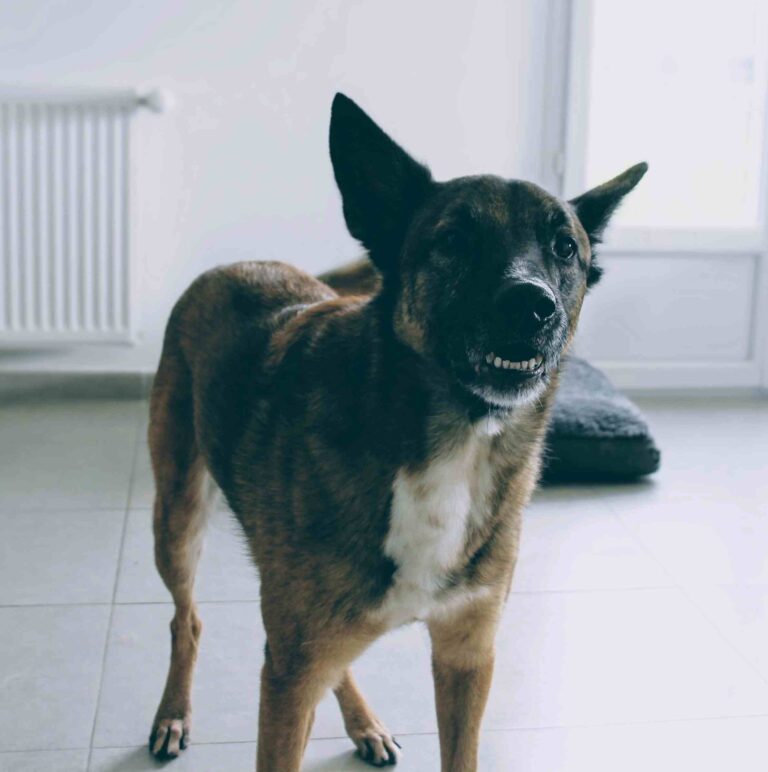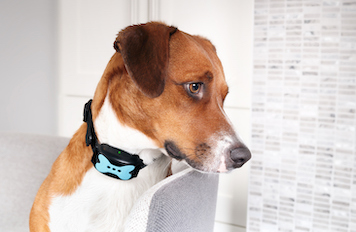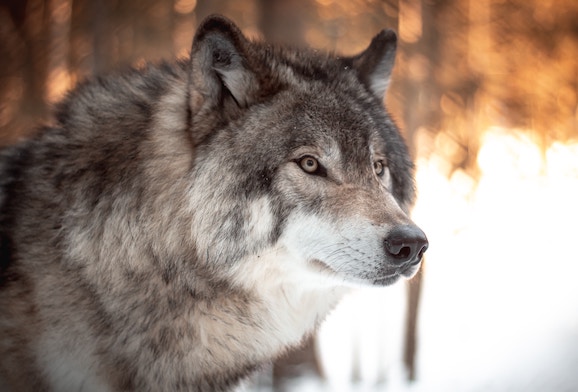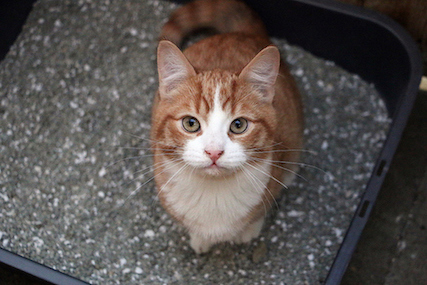What is Reactivity?
Dog reactivity is one of the most common behavioral issues I encounter in my practice. I usually define reactivity as barking, lunging, or pulling toward another dog, person, or stimulus (e.g., a car or skateboard), which causes the other animal, person, or stimulus to move away. Both environmental factors and genetics contribute to the development of reactivity. It can range from mild to severe, occur in various environments, and almost every dog experiences some level of reactivity throughout their lifetime. Although the behavior can escalate quickly, reactivity is predictable both throughout a dog’s life and in real time through specific body postures. The behavior is treatable, and with proper treatment, reactivity has a very positive treatment outcome.
Factors Contributing to Reactivity
Early Environment
The environment has a significant impact on the development of reactivity. Dogs that spend their early socialization period (approximately 3-12 weeks) in less-than-ideal environments may be more prone to reactivity. Puppies should be housed indoors, in a common area with typical everyday sounds and noises. They should stay with their litter until they are 8-9 weeks old. During this time, puppies should be exposed to a variety of people and other healthy, friendly pets. Environments where puppies are kept in isolation, often in outbuildings, without the opportunity to socialize with multiple family members daily, should be avoided. Once a puppy is at home, socialization should continue throughout their life, with particular attention to the remainder of their socialization period (8-12 weeks), adolescence (6-18 months), and early adulthood (12-24 months).
It can be a common misconception that abuse or neglect causes reactivity. While that may be true in some extreme situations, in many cases, it is simply a less-than-ideal environment and a lack of early socialization that contribute to the development of reactivity. Although finding the ideal early environment can be challenging, with the right conditions and proper socialization, reactivity can be avoided almost entirely.
Why Exposure is Proper Socialization
Some caregivers expose their puppies to stimuli or enroll them in puppy classes to socialize and prevent reactivity. They may feel frustrated or confused when, later, their young adult dog starts displaying reactivity. Unfortunately, exposure alone is insufficient to prevent this behavior. It’s not just about encountering other dogs, people, or stimuli; it’s about forming a positive association with those experiences. Furthermore, while the socialization period is crucial, actively seeking positive experiences for a puppy and young dog should continue well beyond 12 weeks. Any early signs of reactivity should then be addressed immediately, and a treatment plan should be put in place.
Breed Differences
Certain breeds are more prone to reactivity; therefore, providing a proper environment and engaging in early socialization is crucial. Individual breeds within various groups may exhibit reactivity, likely due to their early domestication and expected roles in society. For example, Chihuahuas, Miniature Pinschers, and Toy Fox Terriers, all from the Toy Group, are known to be more reactive. Breeds in the Terrier group, including Miniature Schnauzers, Rat Terriers, and Russell Terriers, also tend to develop reactivity. Additionally, other breeds in the herding group, such as Corgis, Malinois, German Shepherds, and Australian Cattle Dogs, may be more prone to reactivity. Understanding breed differences can help caregivers address the specific needs of their individual dogs and anticipate potential problem behaviors. For these breeds, monitoring the precursors to reactivity is important for the long-term success of both caregivers and the individual dog.
Other Genetic Factors
Regardless of the breed, individual dogs can be more genetically prone to reactivity. Parental behavior and general disposition can help give insight into how a puppy might behave as an adult. Some dog experts, however, look specifically at the dog’s maternal grandmother’s behavior. Close relatives of your puppy should be able to greet strangers without hesitation and interact with unfamiliar dogs without hesitation. If parents or other close blood relatives engage in reactivity or aggression, those behaviors might likely be passed on to your puppy.
Early Signs of Reactivity
Early Puppy Behavior
Reactivity can be predicted by observing an individual puppy’s behavior. Puppies who are shy or avoidant of dogs, people, or other everyday stimuli face an increased risk of developing reactivity. Those who exhibit fear-related behaviors at a young age, if not treated properly, will likely develop reactivity without early intervention. Puppies do not outgrow these behaviors; instead, they unfortunately grow into them. A lack of early socialization, even with a typically developing puppy, can encourage, if not almost guarantee, some degree of reactivity or other serious behavioral issues. The good news is that fear-related, avoidant behaviors can be modified, and reactivity can be completely avoided with appropriate early intervention.
The Development of Reactivity in Real Time
Reactivity is predictable not only throughout an individual’s lifetime, influenced by their early environment and genetics, but also in the moment and in real-time. This predictability arises from observing the individual dog’s body language and the stimuli to which they are exposed.
Predicting the Burst of Reactivity
In the moment, reactivity is predictable if you are aware of its precursors or the behaviors that occur just before an outburst of reactivity. A keen observer can almost sense the behavior that is about to occur. For me, the most immediate precursor I observe is eye contact. From there, a tightly closed mouth can be a telltale sign that a dog is about to become reactive. Other behaviors may include ears pointed toward the target, a tail directed toward the target, fur standing on end, or a forward body posture.
Certain breeds tend to engage in more prolonged bouts of precursors than others. For example, most bully breeds will engage in several seconds of precursors before reacting. Conversely, terriers or herding breeds tend to exhibit nearly immediate reactivity when seeing a stimulus and offer very quick precursors before, what almost always is, a bark. Again, these characteristic breed differences are formed based on how an individual breed might be used in society. For some breeds, vocalization may be considered detrimental, while for others, it may be considered beneficial. And, of course, a lot of variation occurs within each dog.
The Difference from Exposure to Exposure
Sometimes, it may seem like your dog reacts inconsistently to various stimuli. In such cases, caregivers might report that their dog’s behavior is unpredictable. A dog may become reactive in response to seemingly random exposures. Rather than this behavior being random, it is more likely the result of factors such as the animal’s history of training and reinforcement, the intensity of the exposure: how close your dog is to the stimulus, the behavior of another dog (in instances where the stimulus is another dog), the size and posture of a person (in cases where the stimulus is a person), the sudden presence of the stimulus, or the speed of the stimulus if it is moving—just to name a few.
Environmental Impact on Behavior
In addition to genetics and early puppy experiences, it is crucial to consider how the environment affects a dog’s reactivity. Reactivity, like any other behavior, has a direct relationship with the environment. Once an animal engages in any behavior, including reactivity, that behavior becomes susceptible to environmental influences. In other words, once it is displayed, the environment will affect the behavior, with its impact either increasing or decreasing. In cases where a behavior persists, the environment has influenced the behavior with an increasing effect. It is important to note that behaviors do not need to be “paid” every time to be maintained long-term. A little “payment” goes a long way in maintaining behaviors, including reactivity.
How Does the Environment Maintain Reactivity?
When a dog exhibits reactivity, the stimulus is often removed. This removal maintains the behavior in the long term and, in most cases, increases its future occurrence. For example, consider going for a walk with a dog that barks at other dogs. When the dog barks, both the person and the other dog continue moving, not necessarily because of the barking dog, but because they are also on a walk. The response is a natural transition from point A to point B. Even though the dog does not intentionally move away after barking, that removal sustains the reactivity of the barking dog. Another straightforward example might involve a reaction to a delivery driver. The driver approaches the house, the dog barks, the driver leaves the package, and ultimately departs. Again, the dog’s reactive behavior is intensified by the delivery driver’s departure. One can imagine this occurring across many different situations.
It is essential to note that while movement away maintains reactivity, in the moment, it is the safest response and my recommendation. If distance is not created between your dog and the stimulus, your dog’s behavior may escalate beyond reactivity.
Challenging Environments
Living in certain environments can be especially challenging with a reactive dog. Apartment buildings or condominiums with frequent foot traffic and close encounters can create more opportunities for the environment to sustain and reinforce reactivity. For example, your dog might become reactive toward another barking dog behind a door in the hallway. As you continue to walk with your dog, this reinforces the behavior for both of you. Later, they may react to a dog when the elevator doors open. You might rush out of the elevator to prevent a conflict, which also reinforces the reactivity. The increased chances to engage in reactivity, paired with the environment’s ability to reinforce it, make this situation even more difficult than others. The good news, though, is that these amplified opportunities provide greater chances to implement an effective treatment plan. In many respects, while these environments pose more challenges, they also offer excellent opportunities to improve behavior once treatment begins.
A Word About Emotions
In my practice, while anxiety, fear, and anger are all valid and very real emotions, my immediate treatment plan does not consider those emotions as causes. The reason I do not directly target those behaviors and instead focus on observable behaviors is that I cannot truly know if the animal is anxious. Since anxiety is a feeling and the dog cannot express it directly, I instead rely on behaviors that are highly correlated. These behaviors include both precursors and full-on reactivity. This does not mean I ignore emotions or think they are not real and raw. Rather, I view emotions, including anxiety, as highly correlated with observable behavior. When addressing observable reactivity, the anxiety in that context does seem to be alleviated as well. Thus, although they occur simultaneously, I don’t necessarily consider emotions like anxiety, fear, or anger to be the cause of reactivity. Our goal is always to reduce and eliminate both reactivity and unpleasant emotions.
Can Reactivity Ever Be Fully Treated?
Some treatment plans rely heavily on operant behavior modifications, either through functional approaches or by focusing on obedience behaviors. While these strategies can be effective, I believe they may sometimes hinder progress with classical conditioning in the early stages of treatment. These approaches can yield positive results, generally have minimal side effects, and are often intuitive for pet parents to implement.
Other, more outdated methods rely on using strong aversive stimuli, such as shock, to address reactivity. These methods can be appealing because, initially, stimuli like shock are effective at controlling behavior. Unfortunately, these immediate results fade quickly, leaving you with even more significant problem behaviors than what you started with.
In my practice, I focus on classical conditioning to teach positive associations with the stimulus that triggers reactivity. As these positive associations develop, the motivation to eliminate the stimulus also diminishes, leading to a reduction in reactivity. It sounds simple on the surface—and to some extent, it is—but there are critical clinical decisions and treatment modifications that significantly impact the treatment outcome. Furthermore, maintaining the integrity of the treatment is vital and explains why we conduct our reactivity programs in this manner. With an effective treatment plan in place, the outcomes for reactivity can be very positive, and in some cases, significant behavioral change can occur in as little as one week.




